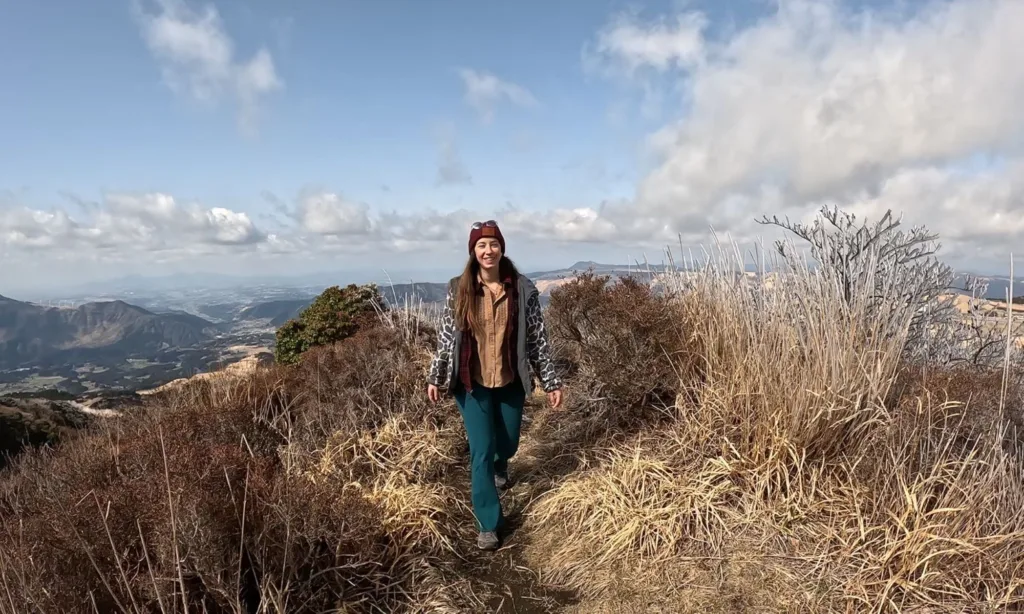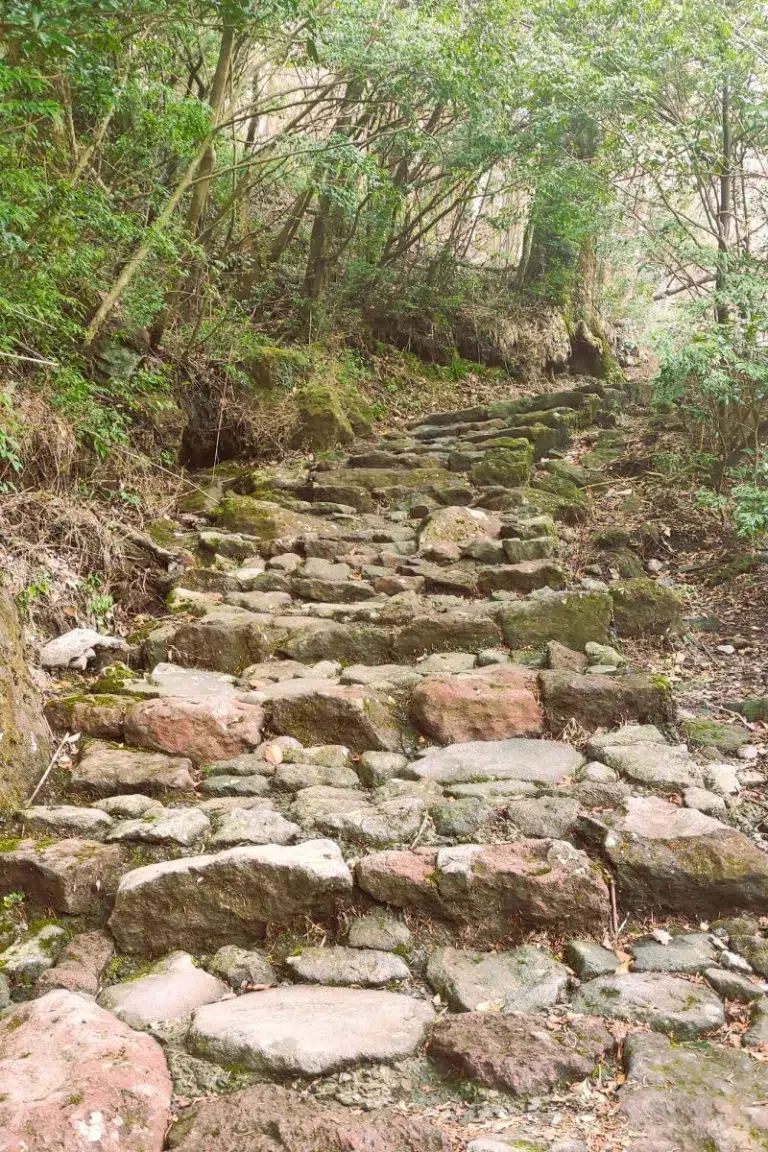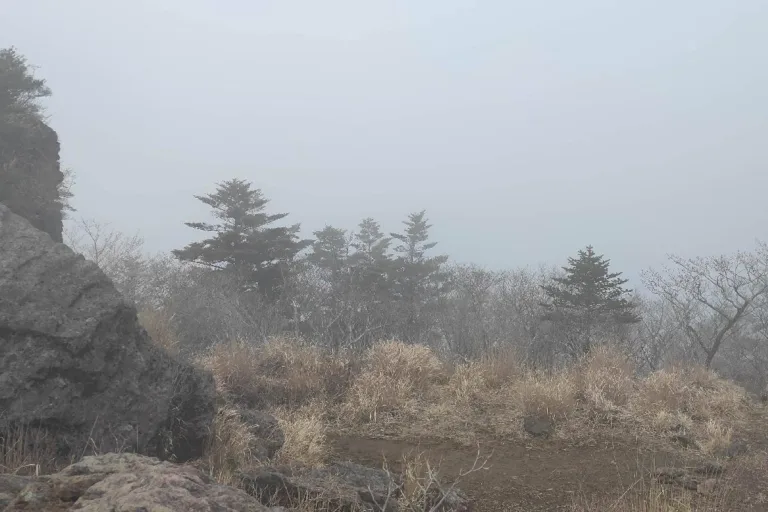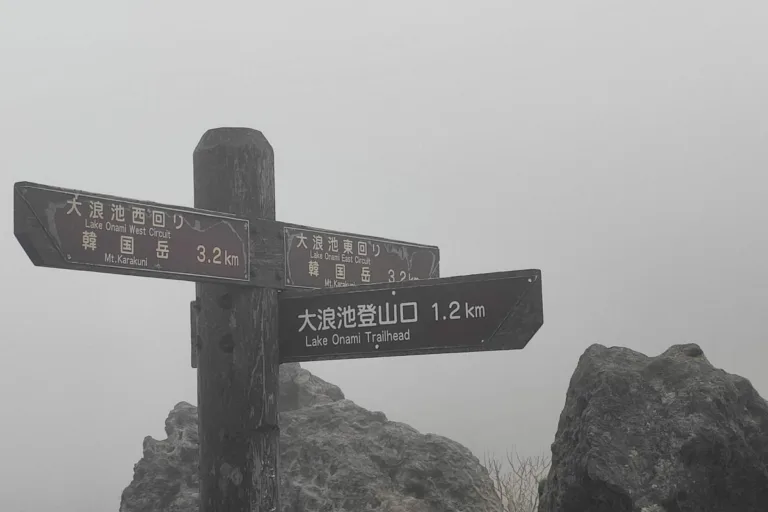Mindfulness Walking While Trekking: Ascend with Minimal Effort
- Noa

Mindfulness walking is a walk in which we focus our attention on our body and its needs at that moment. The method can be applied to walking, trekking, and sports, when the body needs more air than at rest. It can help us breathe in a controlled manner and get cleaner air into our lungs. More in the post: Why it’s important to enjoy the road.
I learned mindfulness walking while climbing a 1.2 kilometer mountain.
I started practicing mindfulness walking when we were in the Kyushu region of Japan and climbed Mount Honami-yake in Kirishima. The climb up the mountain was 1.2 kilometers, most of which was quite a steep climb up stairs.
Already in the first few minutes of climbing, I began to feel difficulty breathing, and after a short time I found myself panting heavily. What’s more, I didn’t enjoy and even suffered from the act of climbing and the physical difficulty that accompanied it.
I believe that in life it is important to enjoy and appreciate the journey instead of looking only at the goal itself. This is because when we focus only on the goal, we may miss important lessons and interesting turns along the way. In addition, when we already reach the goal, the feeling of satisfaction will probably only last a short time. Before long, we will be looking for a new goal to conquer. On the other hand, if we also enjoy the journey itself, then we can feel more present during our actions and experience the whole experience more deeply.
In the same way, when I went up the mountain, I came to the conclusion that if I wasn’t enjoying the journey but was just waiting to reach the top of the mountain, I might be missing something

I remembered the term mindful walking and intuitively began to match the pace of my walking to the pace of my breathing.
Step-inhale. Step-exhale. I examined what sensations I was experiencing in my body, what my heart rate was and what my needs were at that moment. I focused my attention on the act of climbing – on the steps, on the heartbeat, on what I saw around me, on the gusts of wind. Of course, I slowed my walking pace to match it to the breathing rate. In a normal state of breathing, the body receives the amount of oxygen it needs to transfer it to the blood and expels carbon dioxide. In a state of heavy panting, we put a large volume of unfiltered air into the lungs. The body does not receive enough oxygen and expel carbon dioxide in a healthy and normal way. In more extreme cases, such as an anxiety attack, rapid ascent to altitude or a respiratory disorder, hyperventilation (overbreathing) can occur. Therefore, matching the steps to the breathing rate is very helpful in regulating the breathing rate and providing the body with the time and amount of air it needs.
I also made sure to breathe in and out only through my nose. When we breathe through our nose, we bring cleaner air into our lungs. This is because the nose has hairs and mucous tissue that belong to the immune system. They help filter out bacteria and particles that shouldn’t reach the lungs.
After a few minutes of practicing mindfulness walking, I passed some hikers. I was surprised to find that I was saying hello to them without panting at all! I continued to climb while concentrating on taking a step on the inhale and then taking another step on the exhale.
The climb became significantly easier compared to the beginning of the climb! I didn’t feel the need to stop to breathe and I was surprised to discover beautiful nature around me – green and sparkling.
We reached the top of the mountain. Clouds covered the view and we couldn't see anything!
In principle, from the top of the mountain we were supposed to see a beautiful lake nestled between the mountains. But instead, it was impossible to see more than ten meters ahead. Normally, I would have been disappointed, but the way up was so enjoyable thanks to the mindfulness walk that I didn’t feel any sense of disappointment at all.
I immediately remembered the podcast I had heard a few days earlier about why it’s important to enjoy the journey and not just wait for the result. I was moved by the beautiful analogy that the universe had arranged for me, thanks to which I learned in a practical way why it’s so important to enjoy the journey.
Of course, it wouldn’t hurt to check the weather either! After all, Japanese winter can be quite intense. But still, the experience was much more meaningful than seeing another beautiful lake.


Mindfulness walking can be applied to any type of walking.
Whether you are hiking in the forest, walking down the street, hiking or walking in the park. All you have to do is focus your attention on the pace of walking, breathing, body sensations and what is happening around you. This is how we actually practice mindfulness without sitting down and practicing meditation.
You can even just go for a walk and practice for a few minutes, on and off. There’s no need to set goals or times, just try to concentrate on walking and enjoy the journey.
Furthermore, in any type of sport, you can practice mindfulness and breathing through your nose that is synchronized with the rhythm of the movement. Just remember to focus your attention on what you are doing and how you feel.
This way you can both enjoy the journey and breathe more healthily!
